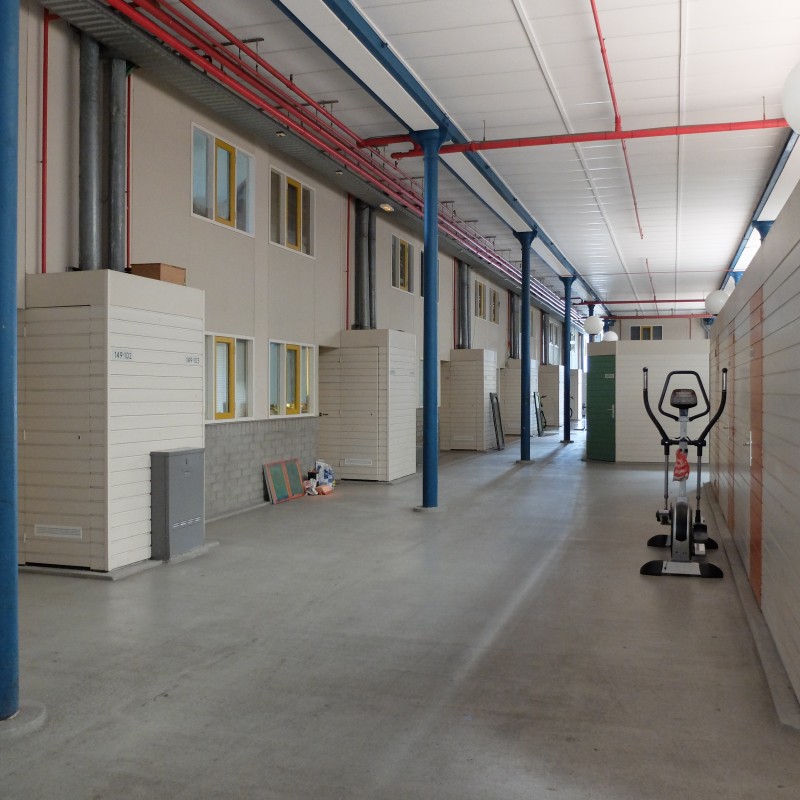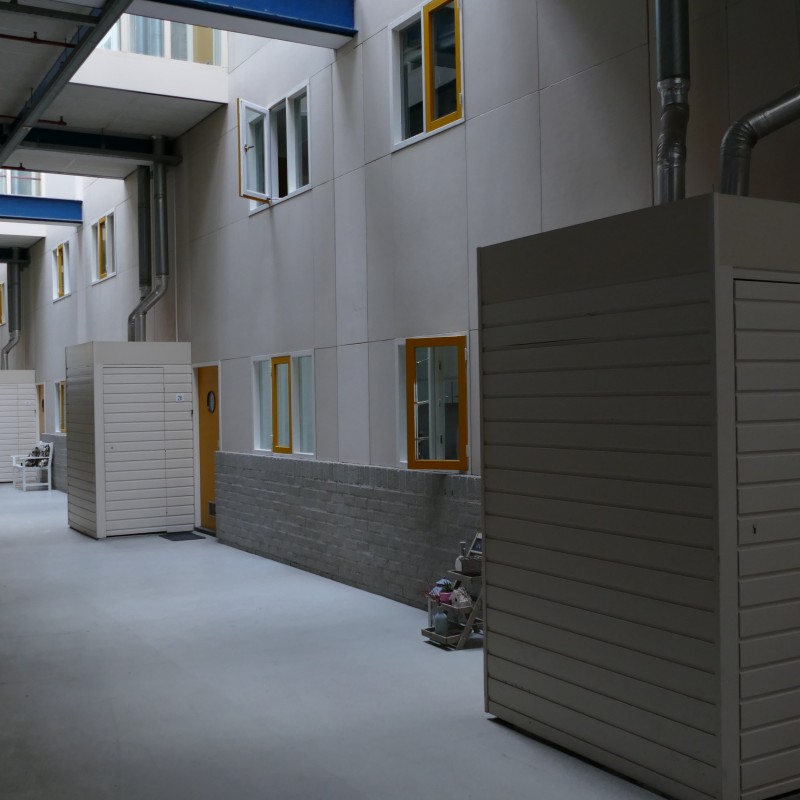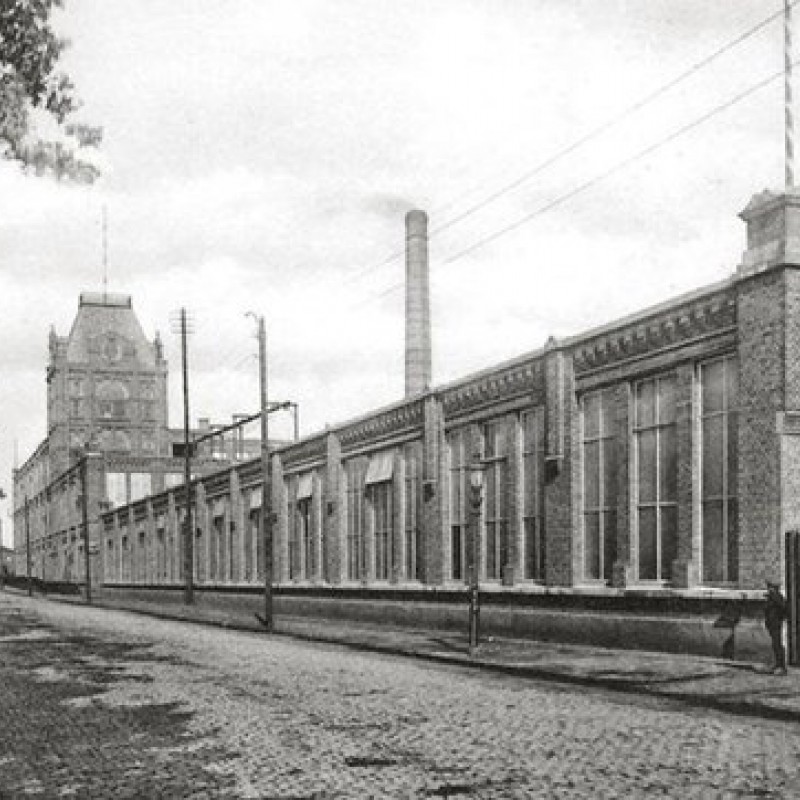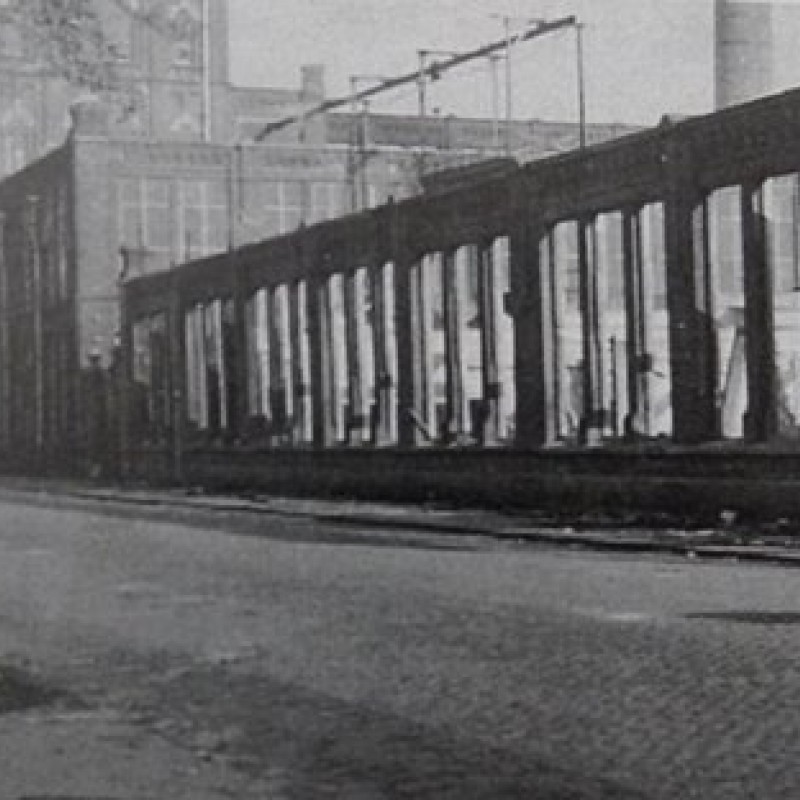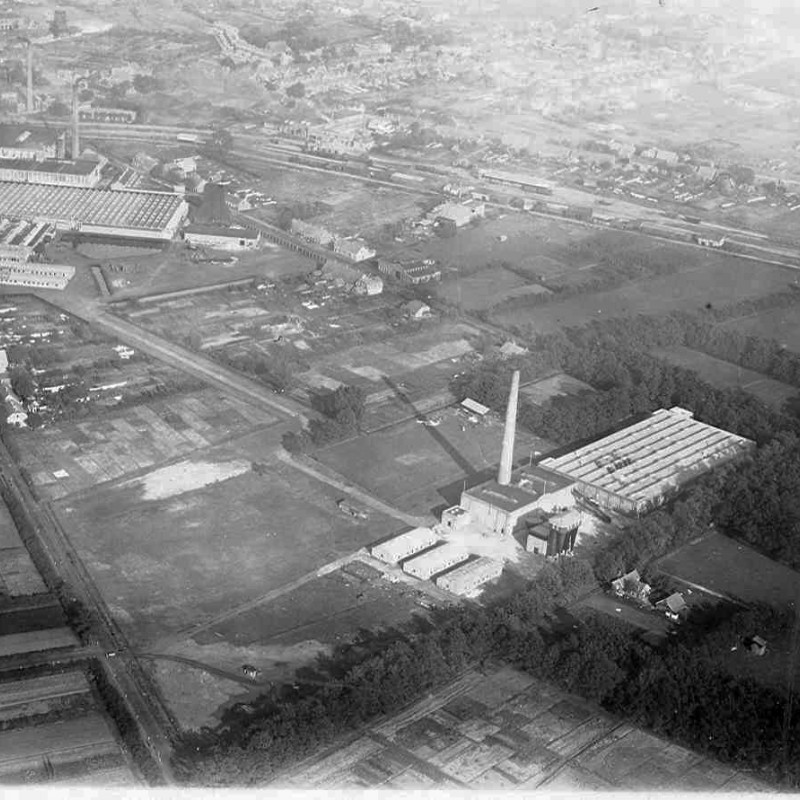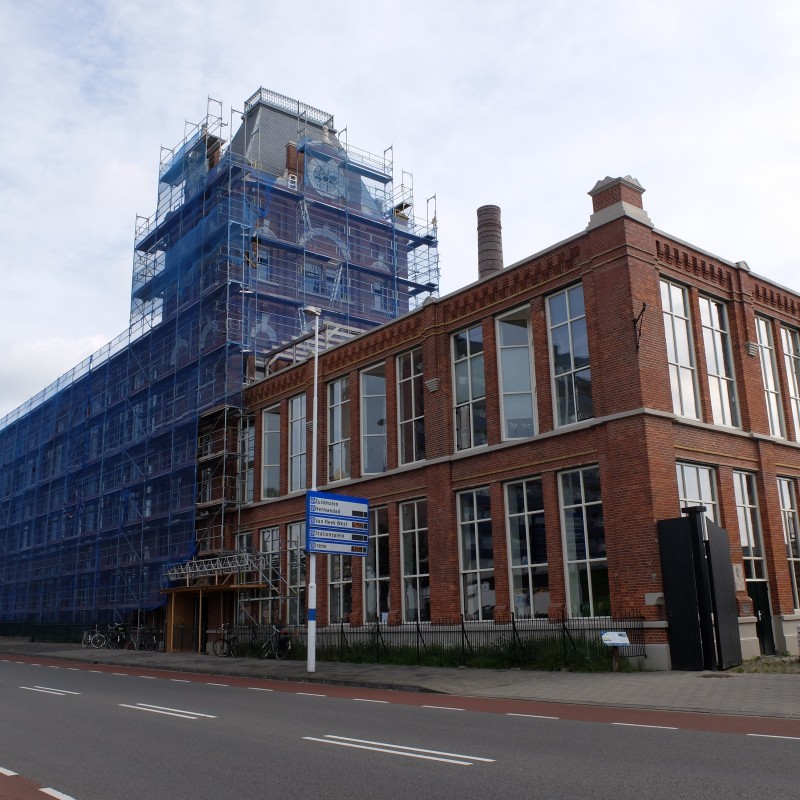Het Jannink
Haaksbergerstraat 147 7513 EL Enschede, Netherlands
| Former Use: | Textile mill | 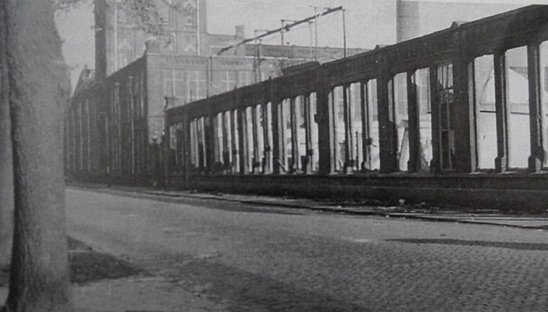 |
| New Use: | Residential & medical care facility | |
| Category: | Residential, Social | |
| Original Architect: | Philip Sidney Stott, Henry Reijgers | |
| Reuse Architect: | Architectural office De Boer (Housing), A. Verhoeven (Jannink museum) | |
| Construction year(s): | 1900 - 1921 | |
| Reuse year(s): | 1979 - 1984 |
Description:
Historic use
The Jannink complex was one of the spinning and weaving mills producing manchester fabrics, in the textile town of Enschede. Founded by the industrialist Gerhard Jannink, it was part of the Gerhard Jannink & Zonen firm, one of the largest textile companies in the Netherlands in the early 1900s.(Hesselink, 1983, 9) The spinning unit of the complex was built in 1900, to be followed by the weaving unit two years later. For two decades after its construction, the mill kept being adjusted to house the growing needs of production. The catalyst for its construction at the specific plot was the development of the Southern Railway, connecting Enschede with Ahaus in Germany.
Jannink was designed by the English architect Philip Sidney Stott, who had a vast international experience in the design of textile mills, in collaboration with the local architect Henry Reijgers. It is a Lanchashire-style mill (de Boer et al., 1995,31) which albeit elegant is not unique. The complex presents several similarities with other works of the architect as well as bearing high resemblance to catalogue model-drawings. (Stenvert, 2011,10-11) The design was led by the principles governed by functionality and the restrictions posed by the machinery allocation rather than aesthetical choices. A detailed architectural description of the historic complex is given by Stenvent (2011, 10-22)
After having been damaged in the WWII, the mill was repaired and kept fully operational to cover the large post-war demand for textiles. Its decline started in the late 1950s. After a merge with another company it finally closed its doors in 1967. The adjacent weaving unit remained operational until 1982 when its owner went bankrupt. (Stenvert, 2011,13)
Reuse Preparation
In a time when brownfields all over Europe were seen as a menace, getting substituted by new developments or sitting unused, the case of Jannink differed, showing an alternative way. A series of events, starting with the availability of the complex for purchase in 1974, finally led to the reuse of its spinning unit. The latter was made possible by two main factors: the decisive action of key stakeholders and the need for certain functions in the area that found a place in the former mill.
The initiative for this “unusual” approach was taken by the architect S. B. (Sake) de Boer along with the urban renewal consultant C.F.L.M. Heerkens. (de Boer et al., 1995, de Boer and Heerkens, 1975,31 and Schuiling, 1986, 444). The parties that acted on it were the housing association “Vooruit” and the municipality of Enschede. The later one, acquired the complex in December 1976 from the investor-contractor Belco Hengelo, saving it from the intended demolition and rebuilding. The stance of the central government which facilitated the project providing funds for its reuse was also significant.
According to (de Boer and Heerkens, 1975, 564-567) the conditions formulated for the complex’ reuse were the following:
“1. The building is only to be maintained, if found a meaningful and functional destination, which will be permanent.
- There should be preferably a relationship between the complex and its new use.
- The new use should meet a current need, tailored to the functions which belong to an area within the canals.
- Efforts should be made for the incorporation of several different functions within the building to encourage liveliness.”
Indeed, the functions’ selection conformed to all the above principles. Jannink was turned into a mixed use complex, combining youth housing which was in deficit at the time in Enschede with the 'Twente-Gelderland textile museum’, that was looking for suitable room to expand.
Reuse process
Jannink’s reuse took place in two phases, after a revision of the standing zoning plan in 1977. In the first phase which started in 1979 and was completed two years later, part of the building’s ground floor was turned into the 'Twente-Gelderland textile museum’. The museum’s design was prepared by the architect A. Verhoeven and was realised with funds from the CRM Ministry (Ministerie van Cultuur, Recreatie en Maatschappelijk). The upper floors were transformed into youth housing by the architectural office of De Boer, funding from the municipality and subsidies from VRO Ministry (Ministerie van Volkshuisvesting).
The second phase of the reuse took place from 1983 to 1984 and involved the transformation of the rest of the building into a variety of housing units. This project bore once again the signature of De Boer’s office. An important development that took place in 1981 was the inclusion of the complex in the national monuments list (Monumentnummer: 15299)(Rijksdienst voor het Cultureel Erfgoed, 2017), making it eligible for more subsidies.
Through this process the spinning mill including the water tower and the chimney were preserved intact while the boiler house and certain secondary structures were demolished. As S. de Boer (interview) explains:
“Our ambition was the preservation of the factory and the chimney, and we succeeded that. The building has retained the image of a textile factory and through its location has a prominent place in Enschede.”
The shell of the spinning mill and the chimney were preserved without significant compromises on a volume level. On the contrary, on a detail level the intervention was rather invasive. The cleaning of the brickwork, the selection of the new bricks and mortar have somehow altered the skin of the mill and thus its aesthetical outcome.(Stenvert, 2011)16. Significant changes in the facades were the substitution of the iron window frames with wooden ones and the replacement of some windows with a V-shaped inwardly projecting window for accommodating the new interior apartments’ subdivision.
Internally, the mill was subdivided into residential units with prefabricated material, typical for the era. The grandeur of the original space was only retained in the museum section and partly in the interior patios. The three first floors of the water tower were used for the main vertical transport axis of the building, equipped with a staircase and a new lift. The original water tank was preserved in the attic while some pieces of the mill’s machinery were retained and put in display in the museum. (Stenvert, 2011,22)
In operation
For c. 30 years, since the early 1980s, Jannink functioned as a mixed use complex. Its residential part, which remains essentially unaltered to this day, is comprised of 121 apartments for social housing. The 76 units that were delivered in 1981 can accommodate one or two people while the remaining 47 belong to different typologies for housing nuclear families, couples and elderly people. The design also provides room for storage in the roofed common patios, a terrace in the upper floor as well as parking for visitors and inhabitants.
The offered apartments’ characteristics in combination with their low rent and Jannink’s location, made them very appealing to the local market. As B. de Boer (interview) explains:
“The Housing Association has never had to deal with vacancies, something that we were initially afraid of.”
Despite the obsolesce of the transformation that counts already more than 35 years, the apartments remain occupied to this day. (H. Jannink interview) According to this research’ qualitative research, most of the residents who selected Jannink to live in, did so for its historic architecture, its central location and its low price.
As far as the museum part of Jannink is concerned, its official opening took place on May 1984. Part of the former mill’s ground floor was transformed into the 'Twente-Gelderland textile museum’. Five years later, its name changed to' Museum Jannink'. Its exhibition illustrated the development of Twente from 1600 to this day with emphasis on the textile industry since 1850. Focus was cast on the impact of this development in relation to the workers’ life-style and the evolution of the textile machinery. There was an exhibition of industrial equipment from different eras, including some pieces of the former Jannink mill. Along with the interesting exhibits, the relevance of the existing structure with the museum, its spatial characteristics as well as its location made the museum attractive on a provincial level.
Shifts
Since the beginning of Jannink’s operation, three main shifts have taken place.The first one involved the change of the complex ownership. In 1994, due to a change in the housing law (“bruterings regeling”) social housing ownership was given to housing associations. As a result, the ownership of Jannink was passed from the municipality Enschede to the Housing Association De Woonplaats.
The second shift which has only taken place recently is the renovation of the building. C. 30 years after its first transformation, Jannink was in need of a refurbishment. As H. Jannink, sr. projectmanager De Woonplaats points out:
“For a long time we didn’t have a straight goal with this building. So we kept the maintenance on a low level which resulted in a leaking roof, rotten window frames, broken bricks, rusty steel structure, etc...”
In deliberation with the residents, de Woonplaats decided to move on with the restoration of the building. The works which are under way since 2015, have a double scope. First to restore the character of the historic building and second to enhance the building’s inner climate and comfort standards. Important works involve: masonry work (repointing and replacement of damaged bricks), restoration of window sills, substitution of concrete elements and replacement of single glazing windows. (Woonplaats)
The third and most important shift that took place in 2007 was the merge of the Jannink museum in the Museum TwentseWelle. The departure of the museum, on the one hand deprived the building from an important function that was facilitating its historic and technical interpretation and on the other, opened a new circle of vacancy for a large part of the building; a problem that still remains unresolved. Woonplaats examined several scenarios for the exploitation of the underused space but they all collapsed in the years of the financial crisis. The current scenario, which appears to be mature and thus probable enough, is the sale of the property to a commercial developer and its transformation to a medical care facility. Mr. A. Haer, Advisor on inherital matters, Municipality Enschede appears optimistic over the new transformation pointing out that the new plan respects the monumental values of the site and has a semi-public character, preventing the exclusion of the public from the monument.(interview)
Relevant Literature:
- Hesselink, B. 1983. Gerhad Jannink & Zonen te Enschede:1853-1938. Jaren van rationalisatie en verzet., Hengelo, Witkam.
- De Boer, H., Bruinsel R., Hoogendoorn, R.et al. 1995. Oude fabrieken nieuwe functies: Herbestemming industrieel erfgoed, Zeist, PIE.
- Inleidende tekst over museumjannink.nl. 2015, [Online]. Available: <http://museumjannink.nl/ > [Accessed 18-01-2017.]
- Rijksdienst voor het Cultureel Erfgoed. 2017. Rijksmonumentenregister. Monumentnummer: 15299 [Online]. Available:<https://monumentenregister.cultureelerfgoed.nl/monuments/15299?City=Enschede&Street=Haaksbergerstraat >[Accessed 18-01-2017.]
- Schuiling, D. 1986. 'Il riuso della fabbrica tessile "Jannink" ad Enschede.' in Recuperare. Edilizia design impianti, 25, 444-447.
